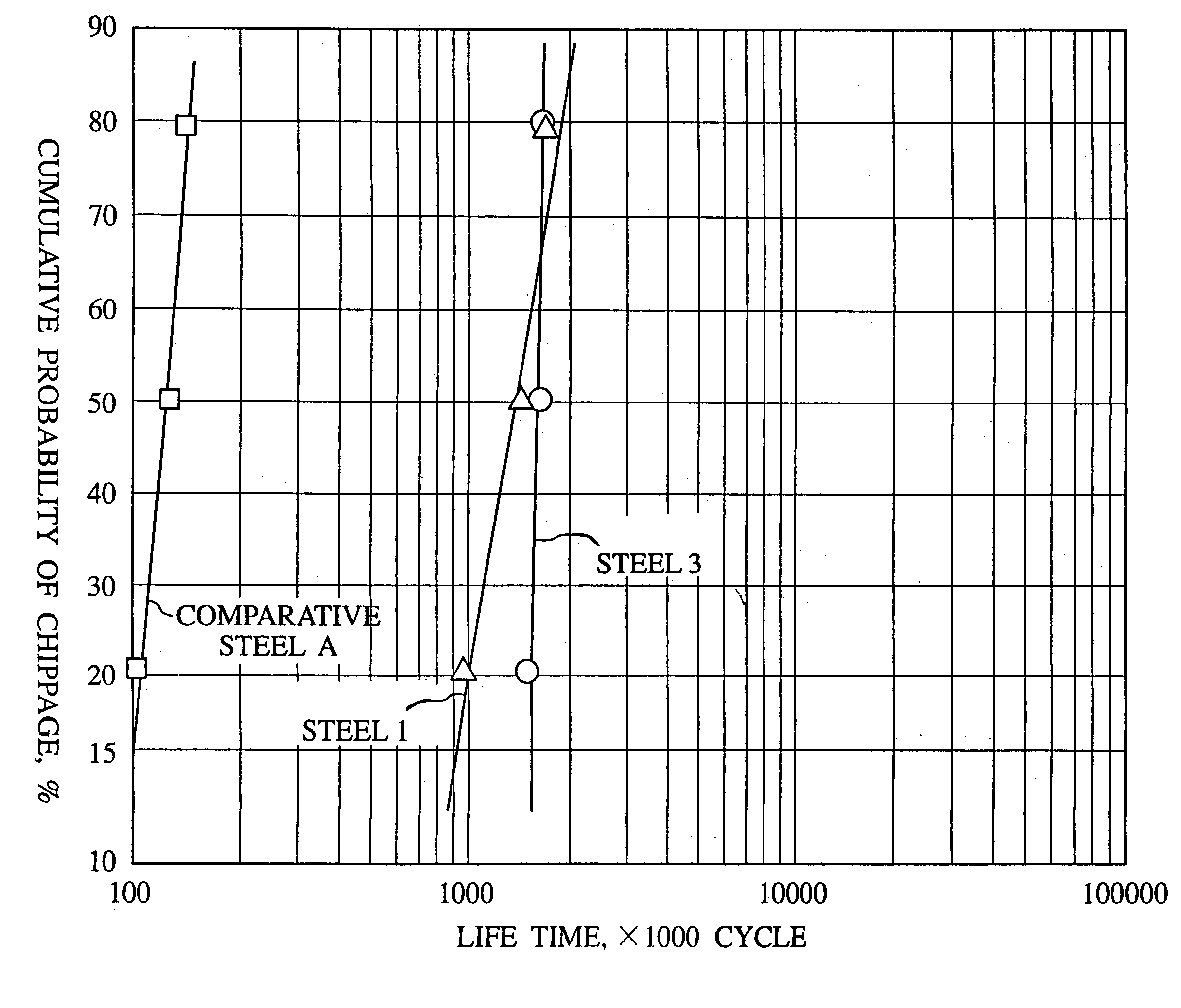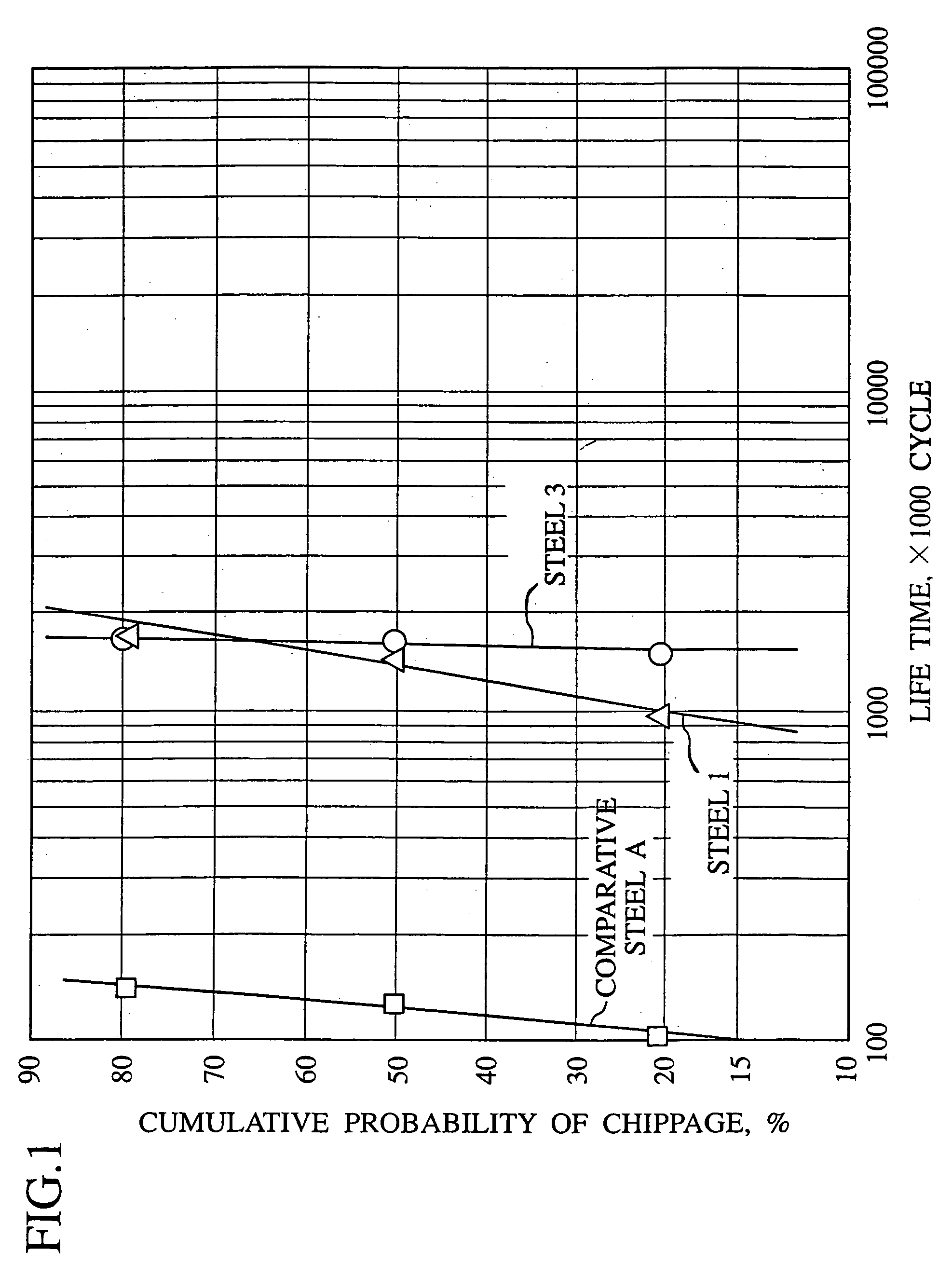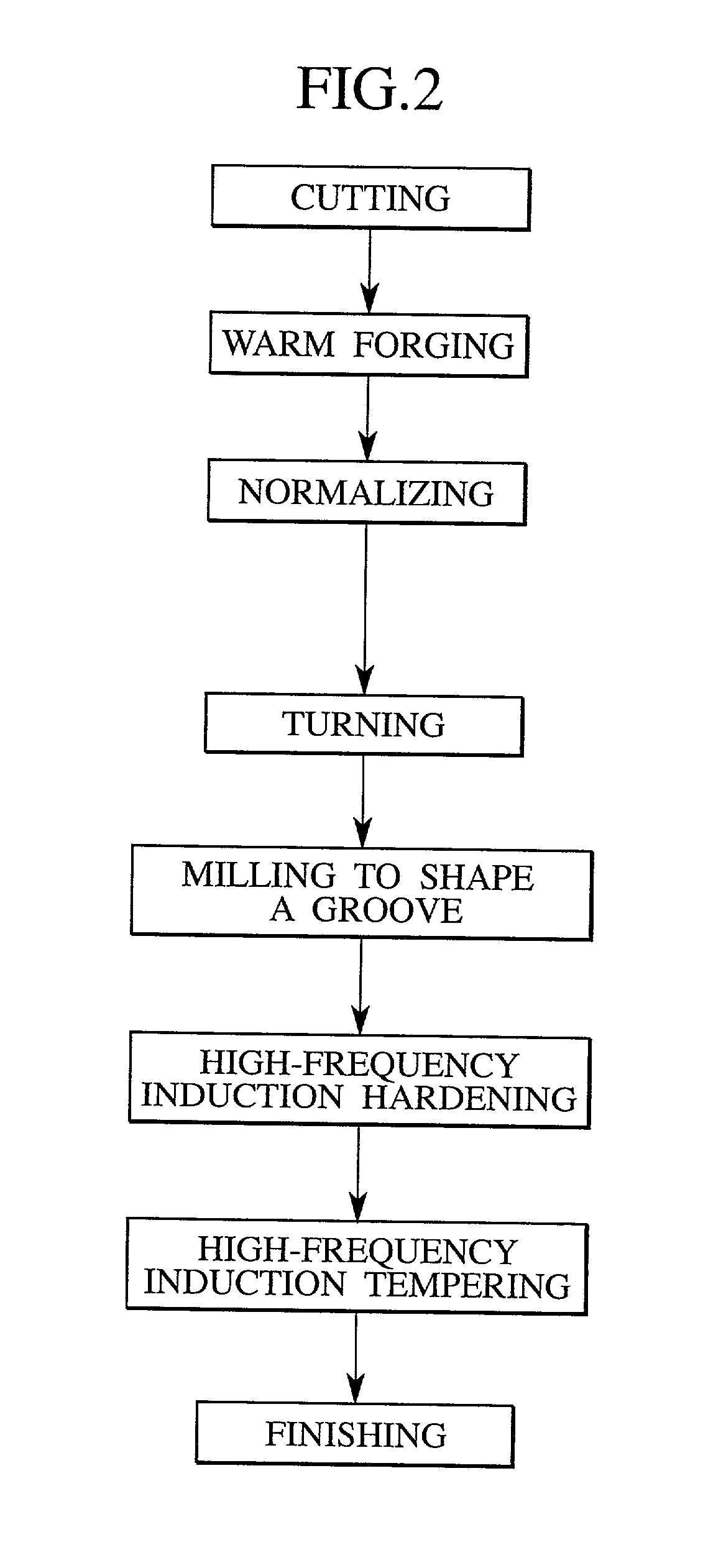High-strength race and method of producing the same
a high-strength, race technology, applied in the direction of manufacturing tools, heat treatment equipment, furniture, etc., can solve the problems of limiting the improvement of initial hardness, flaking and pitching, and deteriorating remarkably the fatigue properties of rolling, so as to achieve superior rolling fatigue properties, superior productivity, and high impact resistance
- Summary
- Abstract
- Description
- Claims
- Application Information
AI Technical Summary
Benefits of technology
Problems solved by technology
Method used
Image
Examples
example 1
[0034]The following experiments were made to prove the effect of the present invention.
[0035]A steel ingot having the composition shown in Table 1 was produced and made into a billet, which was then hot-rolled into a round bar having a diameter of 50 mm. A cylindrical specimen having a diameter of 30 mm and a height of 45 mm was produced from the resulting round bar by machining. The obtained cylindrical specimen was heated to 720° C. and 780° C. to carry out warm forging with a work ratio of 50% by using a press machine thereby evaluating the warm forgeability. After that, the relationship between the condition (cooling rate) of normalizing and hardness was examined. The results are shown in Table 2.
[0036]On the other hand, a roller pitching test was made to evaluate the surface fatigue strength. Therefore, the following operations were carried out for a test part having a diameter of 26 mm and a length of 28 mm.
[0037]First, the surface temperature of the test part was raised by hi...
example 2
[0049]An outer race was produced from the steel having the composition shown in Table 1 according to the steps shown in FIG. 2. Although the hardness of steel as described herein at room temperature was higher than that of the comparative steel, the resistance to deformation during warm forging was not excessively high. The steel was treated by warm forging without any problem.
[0050]The results of the measurement of the hardness before machining and after normalizing are shown in Table 3. The normalizing condition 1 in Table 3 is as follows: the steel sample kept at 850° C. for 40 minutes, thereafter cooled to 550° C. at a cooling rate of 10° C. / min over 30 minutes and further allowed to cool in the air. The normalizing condition 2 is as follows: the steel sample is kept at 850° C. for 40 minutes, thereafter cooled to 550° C. at a cooling rate of 3.3° C. / min over 90 minutes, then kept at 550° C. for 30 minutes and then allowed to cool in the air.
[0051]Since the cooling rate of the n...
PUM
| Property | Measurement | Unit |
|---|---|---|
| temperature | aaaaa | aaaaa |
| temperature | aaaaa | aaaaa |
| diameter | aaaaa | aaaaa |
Abstract
Description
Claims
Application Information
 Login to View More
Login to View More - R&D
- Intellectual Property
- Life Sciences
- Materials
- Tech Scout
- Unparalleled Data Quality
- Higher Quality Content
- 60% Fewer Hallucinations
Browse by: Latest US Patents, China's latest patents, Technical Efficacy Thesaurus, Application Domain, Technology Topic, Popular Technical Reports.
© 2025 PatSnap. All rights reserved.Legal|Privacy policy|Modern Slavery Act Transparency Statement|Sitemap|About US| Contact US: help@patsnap.com



